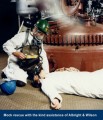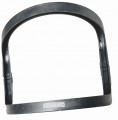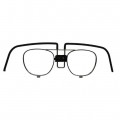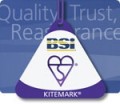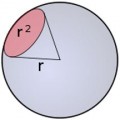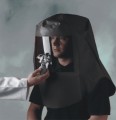 Loading... Please wait...
Loading... Please wait...Categories
 Recently added
Recently added
-
£1,500.00 (inc VAT) £1,250.00 (ex VAT)

-
£52.46 (inc VAT) £43.72 (ex VAT)

-
£57.12 (inc VAT) £47.60 (ex VAT)

-

-
£137.20 (inc VAT) £114.33 (ex VAT)

Our Newsletter
- Home
- Safety Guidance and information downloads
- Guidance for Testing (Lifting) Equipment (LOLER Regulations)
- Home
- Hire & Maintenance for Safety & Medical Equipment
- Safety Equipment Maintenance
- Guidance for Testing (Lifting) Equipment (LOLER Regulations)
Guidance for Testing (Lifting) Equipment (LOLER Regulations)
Product Description
The Lifting Operations and Lifting Equipment Regulations, 1998 (LOLER) and the Provision and Use of Work Equipment Regulations, 1998 (PUWER) govern most cranes and powered lifting devices.
The Regulations provide a means of replacing older regulation and orchestrating its intention under a simpler system of management. The Regulations apply to PPE, where it is designed to carry, or move loads through significant falling distance - for example rope access equipment, for work positioning devices - and, usually where using PPE is invoked through compliance with the The Work at Height Regulations (2005, amended 2007).
Regarding who may test equipment and certify its continued use, at inspection and maintenance intervals, a suitably 'competent person' may be the equipment owner (the Employer, or his delegate), or a third party contractor; always providing appropriate knowledge, experience and suitable equipment for repeatable, reliable testing.
Makers of equipment (CE License holders) are obliged to clearly mark, limits of use, recommended testing interval and any special method of test required that may not be obvious from the design of the device. Safe Working Loads and other, relevant limits must be clearly indicated on the device.
Generally, such equipment requires periodic testing to one-and-a-half times its rated, safe working load, by using dead-weights, strain or load gauges. Equipment must show no sign of strain after such stress and other tests may also be required - especially in the case of dynamic load arrestors, such as intertia-braked devices; designed to control acceleration rates within the limits that the falling body can tolerate without injury.
The System of testing may include thorough, six monthly examination or otherwise, accord with a written scheme of examination, drawn up by a competent person. This may give rise to some anomalies because some manufacturers will express different inspection recommendations for very similar types of equipment - several maintaining that a maximum interval of twelve months be applied. In any case; both the WAHR and LOLER require that visual and tactile (for functional indication) examination be made before each use of the equipment - that operatives are appropriately trained and that the work be planned, prior to using such equipment.
By appropriate compliance: Helios tests (PPE) load equipment according to the maker's published instructions and otherwise to one and a half times marked, working loads; excepting for dynamic brakes (inertia arrest devices), which are tested to ten percent over the marked, working load. Tell-tales are replaced, stitching on webs, webbing and rope conditions carefully examined and load tested, where appropriate. Load testing is done using dead-weights, calibrated to safe tolerances, or using load cells, similarly calibrated. Equipment tested is tagged and our written scheme of inspection requires that we keep the test data for at least five years following the last test.
This guidance outlines the changes in inspection and thorough examination of lifting equipment introduced by the Regulations.
Regulation 9:reproduced here: deals with the most controversial changes: Thorough examination and inspection 9.
(1) Every employer shall ensure that before lifting equipment is put into service for the first time by him it is thoroughly examined for any defect unless either-
(a) the lifting equipment has not been used before; and
(b) in the case of lifting equipment for which an EC declaration of conformity could or (in the case of a declaration under the Lifts Regulations 1997) should have been drawn up, the employer has received such declaration made not more than 12 months before the lifting equipment is put into service; or, if obtained from the undertaking of another person, it is accompanied by physical evidence referred to in paragraph (4). 2(2)
Every employer shall ensure that, where the safety of lifting equipment depends on the installation conditions, it is thoroughly examined-
(a) after installation and before being put into service for the first time; and
(b) after assembly and before being put into service at a new site or in a new location, to ensure that it has been installed correctly and is safe to operate.
(3) .................every employer shall ensure that lifting equipment which is exposed to conditions causing deterioration which is liable to result in dangerous situations is- (a) thoroughly examined- (i) in the case of lifting equipment for lifting persons or an accessory for lifting, at least every 6 months; (ii) in the case of other lifting equipment, at least every 12 months; or (iii) in either case, in accordance with an examination scheme; and (iv) each time that exceptional circumstances which are liable to jeopardise the safety of the lifting equipment have occurred; and (b) if appropriate for the purpose, is inspected by a competent person at suitable intervals between thorough examinations, to ensure that health and safety conditions are maintained and that any deterioration can be detected and remedied in good time.
(4) Every employer shall ensure that no lifting equipment- (a) leaves his undertaking; or (b) if obtained from the undertaking of another person, is used in his undertaking, unless it is accompanied by physical evidence that the last thorough examination required to be carried out under this regulation has been carried out. The HSE’s Guidance on LOLER advises that the “competent person” who carries out the thorough examinations, will decide whether a test is necessary, the nature of that test and the most appropriate method of carrying it out.
Regulation 9(2), advises: where equipment is assembled on a new site, such as a tower crane, the lifting machinery should be tested, as it was before the introduction of LOLER. Lifting equipment owners are now given a choice: a) they may continue with a similar routine to the previous regime of inspection, thorough examination and test or b) they may replace this with a written “examination scheme” based on the manufacturer’s recommendations and the amount that the lifting equipment is used. The CPA Best Practice Guide on cranes recommends that an examination scheme could be introduced for the very large cranes which could incorporate alternative test methods to load testing such as non-destructive testing as part of condition monitoring. The examination scheme should be started when the crane is first put into use and must be supported by very detailed records that can only be provided by data loggers. 3Apart from these very large cranes, most cranes and other lifting equipment in current use continue to be overload tested on a four-yearly basis. The new regulations still permit thorough examination and testing to be carried out by competent persons whether employed by the owner or by a third party inspection company. The competent person must however be sufficiently independent and impartial to allow objective opinions to be made. The new Regulations have reduced the period between thorough examinations from 14 months to no more than 12 months. Also, all lifting machines that lift persons and all lifting gear must undergo a thorough examination by a competent person at least once every 6 months.
LOLER defines lifting equipment as "work equipment used for lifting or lowering loads and includes attachments used for anchoring, fixing or supporting it". This means that those lifting machines that have not previously been covered by the Construction (Lifting Operations) Regulations, such as forklifts, telehandlers, mobile work platforms and jacks are now covered.
The HSE no longer provides report forms for inspection, thorough examination and testing. These reports may be kept on hard copy forms or stored electronically where they must be readily accessible for inspection. Whilst the above guidance does not cover in detail the full requirements of LOLER, it does deal with the principal changes from previous practice prior to 1998. The information that should be included in the report of thorough examination is set out in Schedule 1 of LOLER and is reproduced below.
Schedule 1 - Lifting Operations and Lifting Equipment Regulations (LOLER) Information to be contained in a report of a thorough examination
1. The name and address of the employer for whom the thorough examination was made.
2. The address of the premises at which the thorough examination was made.
3. Particulars sufficient to identify the equipment including where known its date of manufacture.
4. The date of the last thorough examination.
5. The safe working load of the lifting equipment or (where its safe working load depends on the configuration of the lifting equipment) its safe working load for the last configuration in which it was thoroughly examined.
6. In relation to the first thorough examination of lifting equipment after installation or after assembly at a new site or in a new location – (a) that it is such thorough examination; (b) (if such be the case) that it has been installed correctly and would be safe to operate.
7. In relation to a thorough examination of lifting equipment other than a thorough examination to which paragraph 6 relates - (a) whether it is a thorough examination - (i) within an interval of 6 months under regulation 9(3)(a)(i); 4(ii) within an interval of 12 months under regulation 9(3)(a)(ii); (iii) in accordance with an examination scheme under regulation 9(3)(a)(iii); or (iv) after the occurrence of exceptional circumstances under regulation 9(3)(a)(iv); (b) (if such be the case) that the lifting equipment would be safe to operate.
8. In relation to every thorough examination of lifting equipment - (a) identification of any part found to have a defect which is or could become a danger to persons, and a description of the defect; (b) particulars of any repair, renewal or alteration required to remedy a defect found to be a danger to persons; (c) in the case of a defect which is not yet but could become a danger to persons - (i) the time by which it could become such a danger; (ii) particulars of any repair, renewal or alteration required to remedy it; (d) the latest date by which the next thorough examination must be carried out; (e) where the thorough examination including testing, particulars of any test; (f) the date of the thorough examination.
9. The name, address and qualifications of the person making the report; that he is self-employed or, if employed, the name and address of his employer. 10. The name and address of a person signing or authenticating the report on behalf of its author. 11. The date of the report.
____________________________
The download is: the HSE's published explanatory notes, ref: ACOLAR LOLER_2007June13v2, which deals with interpretation of regulation and of the HSE ACoP
Find Similar Products by Category
Customers Who Viewed This Product Also Viewed
-
£0.00 (inc VAT) £0.00 (ex VAT)

-
£0.00 (inc VAT) £0.00 (ex VAT)

-
£0.00 (inc VAT) £0.00 (ex VAT)

-
£0.00 (inc VAT) £0.00 (ex VAT)


